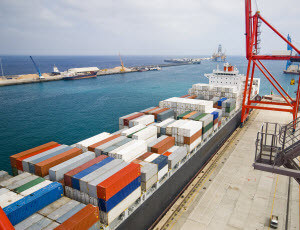Improving Operational Efficiency on Ships with Air Lubrication
As the ship building industry’s desire to reduce fuel consumption and carbon emissions rises, companies are doing all they can to execute plans and strategies that accomplish this goal. For some marine engineers, this means exploring renewable resources and alternative sources of energy.
One of these methods includes air lubrication, a system which reduces resistance between a ship’s hull and water in the ocean by using air bubbles.
Learn more about air lubrication, what it is, and how it can benefit your company.
What is air lubrication?
 Air lubrication, also known as “bubble technology,” relies on producing air beneath the ship to create a layer of bubbles. These bubbles will then reduce the friction between the hull and the seawater.
Air lubrication, also known as “bubble technology,” relies on producing air beneath the ship to create a layer of bubbles. These bubbles will then reduce the friction between the hull and the seawater.
The principle to this method involves utilizing a blower or system that will create the air bubbles and pass them in a symmetrical fashion along the ship’s bottom. This air is blown constantly and the system replenishes the lost air continuously to produce the desired effect.
According to marineinsight.com, “With the right ship hull design, the air lubrication system is expected to achieve up to 10-15% reduction of CO2 emissions, along with significant savings of fuel.”
What are the benefits of air lubrication?
The main benefit of the air lubrication system is that this method reduces the fuel that is used in the ship, which minimizes costs for companies. It also reduces CO2 emissions.
One specific company, Silverstream Technologies, has installed their own air lubrication system called Silverstream System. This system has been installed on the vessel of the Norwegian Cruise Line and improves both operational and environmental efficiencies including reducing emissions and fuel costs, and improving sustainability.
Marineinsight.com details that The Silverstream System “produces a thin layer of micro bubbles that creates a single ‘air carpet’ along the hull of the vessel. This reduces the frictional resistance between the water and hull and improves the vessel’s operational efficiency, reducing fuel consumption and associated emissions. The technology can be added to a new build design, or retrofitted to an existing ship within just 14 days.”
DNV GL even declared that the air lubrication system will continue to be a reliable method to make ships more efficient which will in turn reduce energy losses.
Adopting an air lubrication system within the ship building industry can have a significant impact on operations, expenses and supplies. Companies are constantly looking for ways to make their products greener. This system utilizes technologies that will continue to improve inefficiencies that companies are looking to find solutions to. Reports claim that more cruise ships will begin implementing the air lubrication system.
CPV Manufacturing serves the ship building industry with the highest quality of products. We understand that your products cannot fail, so we manufacture parts that you can rely on for peace of mind.
Click here to contact CPV Manufacturing for more information.

